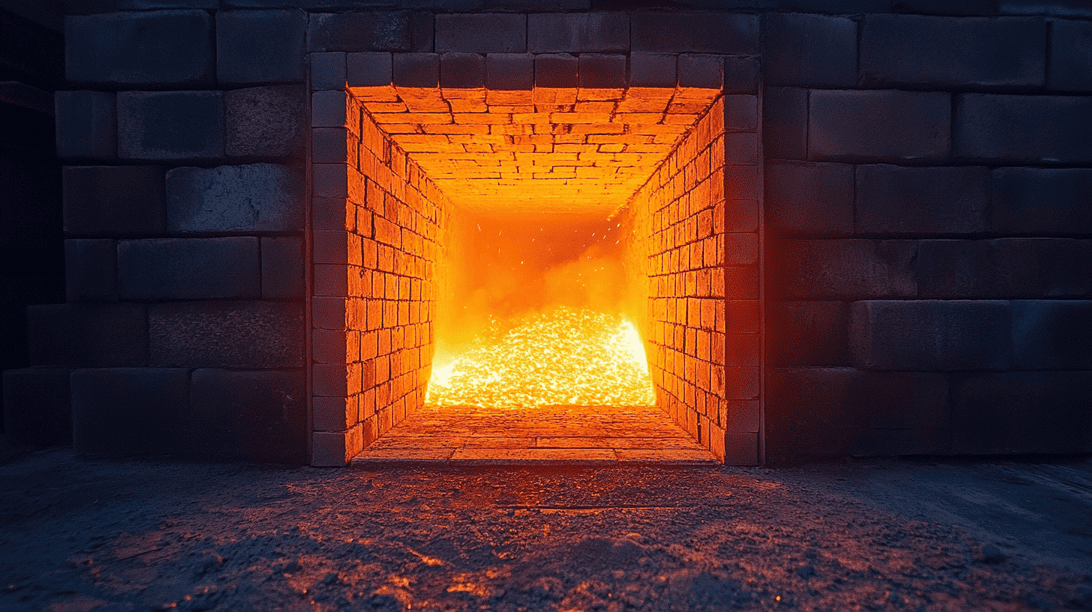
Refractories
Refractory materials are designed to withstand extreme temperatures and harsh environments, being essential for lining furnaces, boilers, and other industrial equipment. Alumina plays a crucial role in the manufacture of refractory bricks and concretes, ensuring durability and thermal resistance. Its low thermal expansion ensures dimensional stability, while its high hardness and chemical stability preserve the integrity of linings under severe conditions.
Tabular alumina is an essential raw material for application in refractory linings. Produced by sintering aluminum oxide at high temperatures, this alumina has a dense crystalline structure with low porosity, making it extremely resistant to thermal shock, wear by friction, and abrasion, as well as highly resistant to corrosion.
Aluminous cement is a hydraulic binder applied in refractory formulations, ensuring particle cohesion during mixing. At high temperatures, it promotes volumetric stability and mechanical strength through the formation of refractory phases.
Hydrated alumina plays a significant role when used in the manufacture of aluminum phosphate, a key inorganic binder for the refractory sector. This phosphate provides excellent mechanical and thermal resistance, enhancing the adhesion and cohesion of refractory compositions with a short setting time.
Additionally, dispersing alumina optimizes refractory concrete by ensuring fluidity with reduced water usage, allowing for adjustments in the setting time of the refractory, acting as retarders or accelerators.
Nossa linha para esse segmento
Clique em cima do produto para saber mais!
Contact us to know more about our products!
For further information click the next button to it.